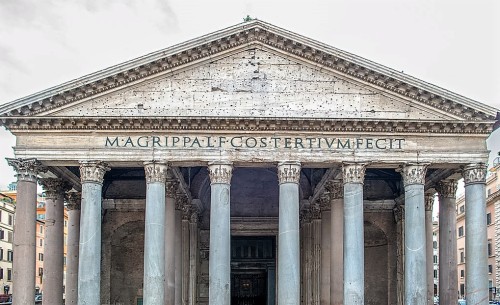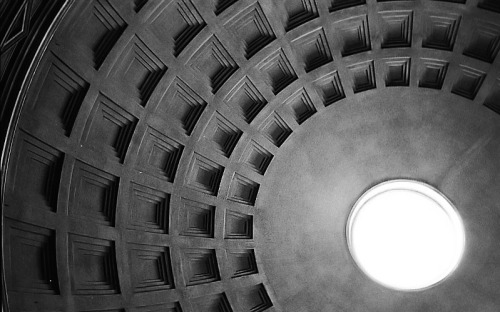This Dance Is To The Death. Along The Way, As These Two Large Galaxies Duel, A Cosmic Bridge Of Stars,

This dance is to the death. Along the way, as these two large galaxies duel, a cosmic bridge of stars, gas, and dust currently stretches over 75,000 light-years and joins them. The bridge itself is strong evidence that these two immense star systems have passed close to each other and experienced violent tides induced by mutual gravity. As further evidence, the face-on spiral galaxy on the right, also known as NGC 3808A, exhibits many young blue star clusters produced in a burst of star formation. The twisted edge-on spiral on the left (NGC 3808B) seems to be wrapped in the material bridging the galaxies and surrounded by a curious polar ring. Together, the system is known as Arp 87 and morphologically classified, technically, as peculiar. While such interactions are drawn out over billions of years, repeated close passages should ultimately result in the death of one galaxy in the sense that only one galaxy will eventually result. Although this scenario does look peculiar, galactic mergers are thought to be common, with Arp 87 representing a stage in this inevitable process. The Arp 87 pair are about 300 million light-years distant toward the constellation Leo. The prominent edge-on spiral at the far left appears to be a more distant background galaxy and not involved in the on-going merger.
Object Names: Arp 87
Image Type: Astronomical
Credit: NASA, ESA, HST
Time And Space
More Posts from Novato-curioso-blog and Others

Pot of red clay containing a hoard of 1,925 Roman silver coins, buried c. 230 AD. Part of the Falkirk Hoard found in August 1933 in Bell’s Meadow, Falkirk, Scotland (National Museums Scotland).
This was and still is the most disgracefull act made by human race.

Boeing B-29 superfortress bomber “Enola Gay” named for Enola gay tibbets, the mother of the pilot Colonel paul tibbets. On the 6th of august 1945 Enola Gay became the first aircraft to drop an atomic bomb, codenamed little boy on the city of Hiroshima, japan.
“My god, what have we done”
- Cpt Robert Lewis, co pilot of Enola gay
La arquitectura fundida con el arte se convierte en una obra de enseñanza histórica. En ellas podemos leer los sucesos de los grandes éxitos militares de la época.





Reliefs on the column of Marcus Aurelius | 2nd Century AD
La maravillosa construcción romana. No deja de sorprenderme y maravillarme.


The Pantheon in Rome | 2nd Century AD
Alejandro, grande entre los grandes



HELLENISTIC WARFARE:
WHEN Alexander the Great died in 323 BCE, he left behind an empire devoid of leadership. Without a named successor or heir, the old commanders simply divided the kingdom among themselves. For the next three decades, they fought a lengthy series of wars - the Wars of the Diadochi or Wars of the Successors - in a futile attempt to restore the tattered kingdom.
Although the Hellenistic Age saw Greek language, art and philosophy flourish throughout Asia, there were few advances in military tactics. Instead, it was a time of “kingdoms and their armies.” The successors inherited an army borne out of the reforms of Philip II of Macedon. He was an innovator; the first Greek to master siege warfare, and with his son Alexander, they made Macedon the foremost power in both Greece and Asia. Together, Alexander and his father would create an army unlike anything the ancient world had ever seen.
Read More
Article by Donald L. Wasson || Photos by Mark Cartwright, Carole Raddato and Caroline Cervera on AHE
Por favor disfruten esta hermosa foto. Por un momento cierren sus ojos e imagínense ahí. Que maravilla no?

Rockesholm
Mujer talentosa y valiente. Vale la pena recordarla.

Polish Literature: The Inquietude by Grażyna Chrostowska (1921 - 1942) The day is like the inquietude of Chopin’s music, The birds, scared away from their nests are circling Low above the earth, They are listening, afraid…
Quietness in the nature, warmth is like before a storm. From the West, low, dark clouds flow. Waylaid fear strikes into the heart. Homesickness, homesickness…
I want to walk on soggy roads, Listen to the sound of wind, Hunt the breath of spring time, Feel the deepest feeling, Find quietness in love.
I am walking, unable to find, keep changing and returning. Somewhere far a way, village hamlets are left behind.
Clouds flew to the East, And on the east side, Lonely, leaning, dark trees endure, In the wind, and in the quietness, They are swung by the inquietude.
■ Grażyna Chrostowska was born on 21 October, 1921 in Lublin, Poland. She was a member of the underground KOP (Komenda Obrońców Polski) organization during the Nazi Germany occupation of Poland. She was arrested by Gestapo in Lublin on 8 May, 1941. Together with her sister she was sent to the Ravensbrück Concentration Camp on 23 September, 1941. On 18 April, 1942, Grażyna Chrostowska (aged 21) and her sister were executed by firing squad in the camp. 8 hours before her death, she wrote the poem titled “The Inquietude” (Niepokój).

by David Pinzer
Jungle Taxi, Yala, Sri Lanka
Otra maravilla romana, ésta ubicada en Efeso

Library of Celsus in Ephesus.
Un hermoso castillo en Molina, data del s. XVII con remodelaciones en el XIX y XX. Quien lo reconstruyó como el original, se quemó parcialmente en 1896, fué Hubert von Tiele-Winckler hijo.

Moszna Castle, Poland
-
 enunarealidadmuycercana-blog reblogged this · 8 years ago
enunarealidadmuycercana-blog reblogged this · 8 years ago -
 enunarealidadmuycercana-blog reblogged this · 8 years ago
enunarealidadmuycercana-blog reblogged this · 8 years ago -
 contentoftheform reblogged this · 8 years ago
contentoftheform reblogged this · 8 years ago -
 djmistergray liked this · 8 years ago
djmistergray liked this · 8 years ago -
 awesome-geek-monkey liked this · 8 years ago
awesome-geek-monkey liked this · 8 years ago -
 awesome-geek-monkey reblogged this · 8 years ago
awesome-geek-monkey reblogged this · 8 years ago -
 skyecoulson reblogged this · 8 years ago
skyecoulson reblogged this · 8 years ago -
 tiranosauriosrex liked this · 8 years ago
tiranosauriosrex liked this · 8 years ago -
 skyhighsebbz reblogged this · 8 years ago
skyhighsebbz reblogged this · 8 years ago -
 rushmorecadet01 liked this · 8 years ago
rushmorecadet01 liked this · 8 years ago -
 aeonus reblogged this · 8 years ago
aeonus reblogged this · 8 years ago -
 untitledtwice reblogged this · 8 years ago
untitledtwice reblogged this · 8 years ago -
 untitledtwice liked this · 8 years ago
untitledtwice liked this · 8 years ago -
 paranormalpizzaman liked this · 8 years ago
paranormalpizzaman liked this · 8 years ago -
 rekaidk666 liked this · 8 years ago
rekaidk666 liked this · 8 years ago -
 susulbr reblogged this · 8 years ago
susulbr reblogged this · 8 years ago -
 mannyxvx-blog liked this · 8 years ago
mannyxvx-blog liked this · 8 years ago -
 novato-curioso-blog reblogged this · 8 years ago
novato-curioso-blog reblogged this · 8 years ago -
 siberious55 liked this · 8 years ago
siberious55 liked this · 8 years ago -
 ishimoras liked this · 8 years ago
ishimoras liked this · 8 years ago -
 un-minuto-mas reblogged this · 8 years ago
un-minuto-mas reblogged this · 8 years ago -
 un-minuto-mas liked this · 8 years ago
un-minuto-mas liked this · 8 years ago -
 pagan--witch reblogged this · 8 years ago
pagan--witch reblogged this · 8 years ago -
 amieelovee reblogged this · 8 years ago
amieelovee reblogged this · 8 years ago -
 currentlyunabletocare liked this · 8 years ago
currentlyunabletocare liked this · 8 years ago -
 ele-me-disse liked this · 8 years ago
ele-me-disse liked this · 8 years ago -
 corporacionplanetarios-blog reblogged this · 8 years ago
corporacionplanetarios-blog reblogged this · 8 years ago -
 elibrink liked this · 8 years ago
elibrink liked this · 8 years ago -
 beautiful-things-and-memes reblogged this · 8 years ago
beautiful-things-and-memes reblogged this · 8 years ago -
 xemskux liked this · 8 years ago
xemskux liked this · 8 years ago -
 floatingochako reblogged this · 8 years ago
floatingochako reblogged this · 8 years ago -
 floatingochako liked this · 8 years ago
floatingochako liked this · 8 years ago -
 one-eggmcmuffin liked this · 8 years ago
one-eggmcmuffin liked this · 8 years ago -
 camwallo-blog liked this · 8 years ago
camwallo-blog liked this · 8 years ago -
 keymokilledkate reblogged this · 8 years ago
keymokilledkate reblogged this · 8 years ago